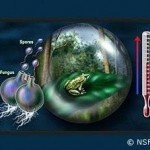Washington – Former Naval Air Facility Adak, Alaska; former Naval Air Station Alameda, California; and Naval Air Station Brunswick, Maine have executed innovative and cost-effective approaches to environmental restoration, including the use of green technologies, sustainable engineering practices, and waste stream reduction. As a result of their efforts, on June 1, 2010 each installation received a Chief of Naval Operations Environmental Restoration Award for fiscal year 2009.
The northern half of Adak Island, Alaska, operated as a naval air facility from 1950 until the base closed in 1997 as part of the Base Realignment and Closure (BRAC) program. Base activities over the years led to disposal and spills of hazardous chemicals, including petroleum, metals, pesticides, and volatile organic compounds. Unexploded ordnance from World War II munitions storage, handling, and training has also contaminated the former base. As a result, Adak has more than 240 sites, totaling 76,800 acres of land, identified for investigation and potential action. The Navy’s current mission at Adak is to quickly and efficiently complete all environmental response actions necessary to meet the BRAC goal of transferring the property, in this case to the United States Fish and Wildlife Service.
While successfully executing a large environmental program, the Adak environmental restoration team has made use of green technologies whenever practicable. Such technologies included wind-powered, free-product recovery systems for the reuse of petroleum as an energy source and a mobile water treatment system to treat water from the decommissioning of nine miles of petroleum product pipelines. The pipeline cleaning water was treated and reused, and the petroleum-water mixture recovered from the pipeline system was also treated, significantly reducing the volume of the waste stream.
The former Naval Air Station (NAS) Alameda, in California now known as Alameda Point, began active naval operations in 1940. NAS Alameda had active flight operations and performed aircraft maintenance and repair activities, was home-port to two carriers and two cruisers and performed maintenance on these ships and supporting infrastructure, all resulting in the disposal of solid wastes and hazardous materials into on-base landfills. Prior to 1974, industrial wastewater and storm water sewers discharged into surrounding waterways. The installation was identified for closure in September 1993, and operations ceased in April 1997. There are 34 Installation Restoration (IR) sites at Alameda Point.
One of the Alameda Point environmental restoration team’s achievements was developing a more sustainable remedy at a landfill (referred to as “IR Site 1”) used as the principal disposal area for waste generated at the former air station between 1943 and 1956. The Alameda Point community originally requested that the Navy remove the landfill and its waste off site. However, the Navy was able to demonstrate that restoring the landfill on site would be protective of both human health and the environment.
The approach for restoring the landfill included removal of contaminants within the top foot of soil, installing a four-foot waste isolation cover to prevent direct contact with buried waste and provide a foundation for open space reuse, excavation of contamination adjacent to and within the shoreline areas, on-site groundwater treatment to address chlorinated solvents, and institutional controls to protect the integrity of the remedy.
Naval Air Station Brunswick (NASB) was first commissioned in 1943 and has housed numerous patrol and reserve aircraft squadrons, as well as supporting ships from various northeastern naval activities. These activities resulted in leaks, spills, and disposal activities that were considered acceptable practice at the time, leaving behind chemicals in the soil, groundwater, and sediment in certain areas of NASB. In total, 26 areas of concern have been identified for investigation. Since being included on the BRAC list in 2005, NASB has accelerated its cleanup program, expediting actions to promote property transfer and civilian redevelopment efforts as the base transitions through closure in May 2011.

NASB has used innovative technologies for its cleanup efforts, including low impact development initiatives to recycle more than 28 million gallons of water annually on-site, rather than discharging the treated water to the town sewer system. Another example of NASB innovation is related to its Navy Exchange Service Station, which is a former gas station at NASB that has high levels of petroleum-related contamination in the soil and groundwater. Rather than demolishing and repairing a portion of the building to remediate the area, the Navy used a cutting-edge technique known as “jet grouting”, in which grout is mixed in place with existing contaminated soils to sequester the petroleum without excavation. More than 7,400 tons of soil from the service station were recycled rather than transported for landfill disposal, allowing for soil reuse and minimal loss of landfill capacity.
The accelerated pace and expanded scope of cleanup efforts at NASB have been possible through cooperation and collaboration of the restoration team with its regulatory and community stakeholders, including the federal and state regulatory agencies, the local citizen’s group, and the local redevelopment authority.
As part of the Navy’s ongoing effort to be a good environmental steward, the Environmental Restoration Program began in the early 1980s in response to the Comprehensive Environmental Response, Compensation, and Liability Act (CERCLA), also known as Superfund. The program’s initial phase, referred to as the Installation Restoration Program, addresses sites that were contaminated with chemicals and hazardous substances in the years before safe handling and waste management practices were in place. Beginning in 2001, the Navy initiated a second phase of the Environmental Restoration Program to address sites with munitions and explosives-related contaminants (excluding operational ranges). This program, referred to as the Munitions Response Program, has completed initial surveys to identify sites and is performing more detailed site investigations to support decisions for cleanup.
Goals of the Navy’s Environmental Restoration Program include:
- Complying fully with federal, state, and local requirements; acting immediately to eliminate human exposure to contamination that poses an imminent threat, including removing or containing the contamination.
- Giving top priority to cleaning up sites which pose the greatest risk to human health and the environment.
- Developing partnerships with the U.S. Environmental Protection Agency, state, and local regulatory agencies.
- Involving the local community through Restoration Advisory Boards (RABs).
- Encouraging participation with timely information and opportunities for public comment and taking all comments into account when making decisions.
- Expediting the cleanup process and demonstrating a commitment to action.
- Considering current, planned, and future land use when developing cleanup strategies.
Through public input and its partnerships with regulatory agencies, the Navy is committed to meeting or exceeding these goals.
As of the end of fiscal year 2009, the Navy has 3,732 installation restoration sites, 278 munitions response sites, and 47 compliance cleanup sites at Navy and Marine Corps facilities. The installation restoration sites are on track to have Remedies In Place (RIP) or Response Complete (RC) by 2014. The munitions response sites are expected to have RIP or RC in place by the end of 2020.
The Navy will continue working toward the goal of a clean, healthy environment that supports the fleet mission, without repeating past practices. The Navy seeks continual improvements to the Installation Restoration Program and the Munitions Response Program, fostering innovative investigation and cleanup decisions through technical workgroups, educational opportunities, and annual conferences that bring restoration staff together to share lessons learned. In addition, working through community-supported Restoration Advisory Boards (RABs), the Navy continues to share information with stakeholders about these programs while promoting understanding of total Navy readiness issues.
By Chris Dettmar, Chief of Naval Operations Environmental Readiness Division, U.S. Navy.
Published at Navy.mil, the official website of the United States Navy.














